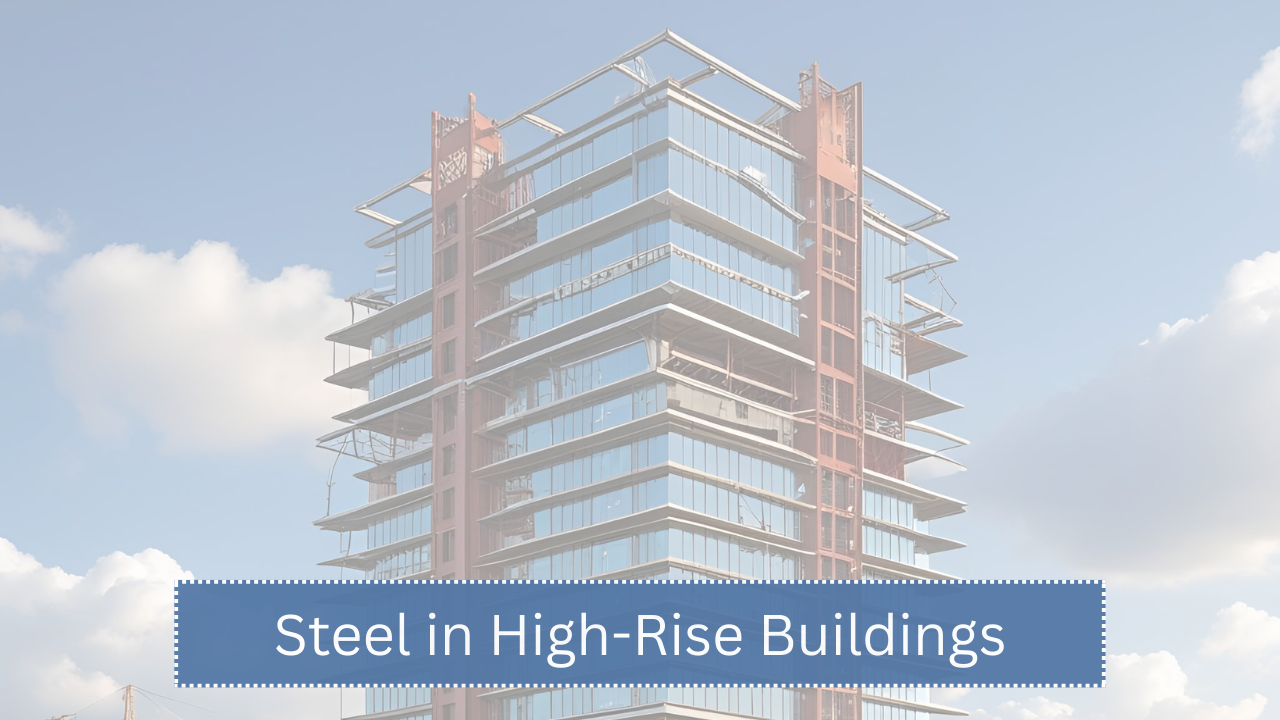Steel is a popular material in the construction of tall buildings across the world. Its strength, flexibility, and durability make it ideal for modern architecture. High-rise buildings, also known as skyscrapers, need materials that can support heavy loads, resist wind and earthquakes, and allow for innovative designs. Steel meets many of these requirements. However, using steel also brings certain challenges that engineers and architects must consider. This article discusses the advantages and challenges of using steel in high-rise buildings.
Why Steel is Chosen for High-Rise Construction
Steel is widely used in tall buildings because it offers a strong structure without adding too much weight. Traditional materials like concrete are heavier, making steel more efficient for building upwards. Engineers also appreciate how steel can be shaped and connected quickly, speeding up the overall construction process.
Benefits of Using Steel in High-Rise Buildings
Steel provides multiple advantages in terms of strength, speed, flexibility, and sustainability. These benefits are essential for tall structures, which must support large amounts of weight and remain stable during environmental stress.
Key Benefits of Steel in High-Rise Buildings
| Benefit | Explanation |
|---|---|
| High Strength-to-Weight Ratio | Steel can hold heavy loads without being too heavy itself, allowing for taller buildings. |
| Faster Construction | Steel components are prefabricated, reducing on-site labor and time. |
| Design Flexibility | Steel allows architects to design complex shapes and open floor plans. |
| Earthquake Resistance | Steel’s flexibility helps buildings absorb seismic shocks without breaking. |
| Space Efficiency | Steel columns are thinner than concrete, creating more usable space inside. |
| Recyclability | Steel can be recycled, making it a sustainable building material. |
| Durability | Steel resists mold, pests, and decay better than some other materials. |
How Steel Enhances Building Performance
Steel not only supports the structure but also improves the overall performance of a high-rise building. It supports taller heights, allows for more floors, and provides safety against fire and wind when treated correctly.
Performance Factors Improved by Steel
| Feature | How Steel Helps |
|---|---|
| Structural Efficiency | Requires fewer and smaller columns, increasing floor space. |
| Fire Protection | When coated with fireproof materials, steel structures can survive longer in fires. |
| Wind Resistance | Steel frames are flexible and absorb wind pressure effectively. |
| Modular Construction | Steel enables modular construction methods, increasing speed and precision. |
Sustainability and Environmental Impact
Steel is considered more eco-friendly when recycled properly. Many high-rise projects now focus on using recycled steel, which reduces carbon emissions compared to producing new steel.
Environmental Benefits of Steel
| Eco-Friendly Aspect | Details |
|---|---|
| Recyclability | Steel is 100% recyclable and often reused without loss of strength. |
| Reduced Construction Waste | Prefabrication limits waste on the construction site. |
| Energy Efficiency | Steel structures can be paired with energy-efficient systems and insulation. |
Challenges of Using Steel in High-Rise Buildings
Despite its advantages, steel also presents some difficulties. These challenges include high costs, the need for protection against fire and corrosion, and greater precision during construction.
Key Challenges of Steel in Tall Buildings
| Challenge | Details |
|---|---|
| High Initial Cost | Steel is often more expensive than concrete or wood. |
| Fire Vulnerability | Steel weakens at high temperatures and needs fireproofing materials. |
| Corrosion Risk | Steel must be treated or coated to prevent rust, especially in humid areas. |
| Skilled Labor Required | Installing steel structures demands trained workers and accurate tools. |
| Sound Insulation | Steel conducts sound, so extra insulation is often needed in steel buildings. |
Cost Factors in Steel Construction
Cost is a major factor in deciding whether to use steel. While steel can reduce construction time and long-term maintenance, the upfront expenses are higher compared to concrete. Additional costs come from fireproofing, anti-corrosion coatings, and specialized labor.
Steel vs. Concrete: Cost Comparison
| Factor | Steel | Concrete |
|---|---|---|
| Material Cost | High | Medium |
| Construction Time | Fast (Prefabrication) | Slower (Curing required) |
| Labor Skill Requirement | High | Moderate |
| Fire Protection | Extra Coating Needed | Naturally Fire Resistant |
| Maintenance | Moderate | Low |
Fire Safety Considerations
Steel buildings need fire protection systems because steel loses strength when exposed to very high temperatures. Without protection, it can fail during a fire. Builders use special coatings, sprays, or encasements to improve fire resistance.
Fire Protection Methods for Steel
| Method | Description |
|---|---|
| Intumescent Coatings | Paint that expands during heat exposure to insulate steel. |
| Spray-Applied Fireproofing | Cement or fiber spray that forms a fire-resistant layer. |
| Fire-Resistant Board | Boards fixed around steel members for insulation. |
| Concrete Encasement | Steel beams encased in concrete to delay heat transfer. |
Corrosion and Moisture Issues
Corrosion is a serious threat to steel, especially in coastal or humid areas. Water, chemicals, and air exposure cause steel to rust over time. To prevent this, builders use galvanizing, painting, or stainless-steel options depending on the project budget and conditions.
Corrosion Protection Techniques
| Protection Type | Details |
|---|---|
| Galvanization | Steel is coated with zinc to prevent rust. |
| Powder Coating | A durable layer of colored powder protects steel from moisture. |
| Stainless Steel | Naturally rust-resistant but more expensive. |
| Regular Maintenance | Cleaning and re-coating surfaces to extend life. |
The Way Forward
Steel has transformed the construction of high-rise buildings across the world. Its strength, light weight, and flexibility allow engineers to create taller and more creative structures. However, the use of steel also requires careful planning to overcome challenges such as fire protection, corrosion, and cost. With the right techniques and technologies, steel remains a leading material for building safe, strong, and sustainable skyscrapers.

